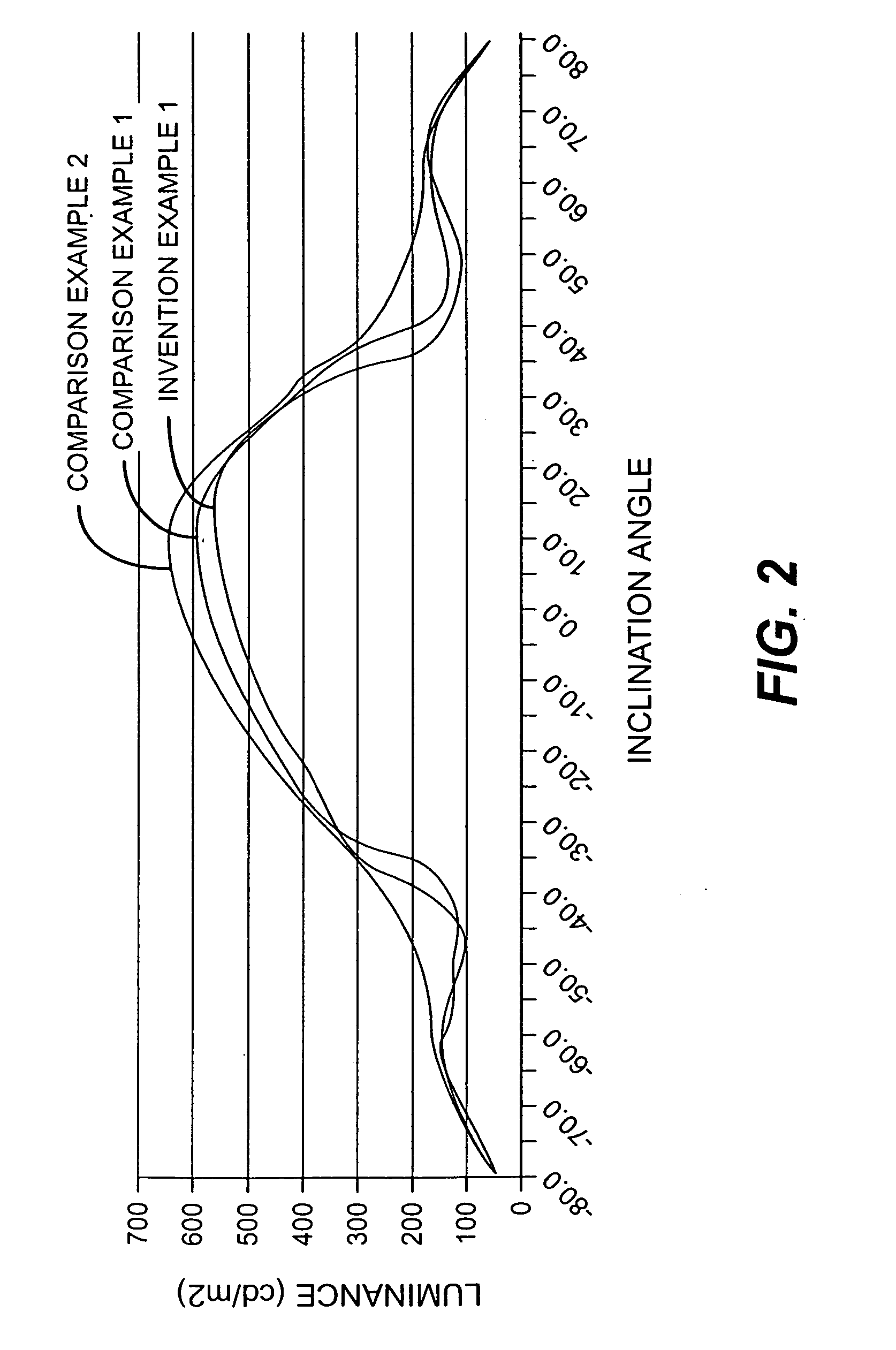Low birefringent light redirecting film
a light redirecting film, low-refringent technology, applied in the direction of instruments, lighting and heating apparatus, spectral modifiers, etc., can solve the problems of loss of light transmission, decrease in on-axis brightness or insufficiently solving the moiré problem, and previous light redirecting films suffer from visible moiré patterns, etc., to achieve high on-axis gain, reduce moiré, and high transmission of polarized light
- Summary
- Abstract
- Description
- Claims
- Application Information
AI Technical Summary
Benefits of technology
Problems solved by technology
Method used
Image
Examples
invention example 1
[0111]The invention material (low birefringence redirecting film) was constructed by methylene chloride re-wetting the surface of the above 125 micrometer thick TFT grade cellulose tri-acetate for LCD. The approximate solvent content in the first 25 micrometers depth in film was 18% by weight of cellulose tri-acetate polymer. A 5 cm×5 cm electroformed tool containing precision light redirecting features was pressed into the surface of the solvent re-wetted cellulose tri-acetate under a pressure of 1,379 kPa for 30 seconds. No additional heat was added. The light direction features created were, on average, 950 micrometers long, 44 micrometers wide, and 22 micrometers high with a 90 degree included angle. The features were random, overlapping, and intersecting across the surface of the film such that the distance between the highest points of two adjacent features had an average pitch of approximately 22 micrometers.
PUM
 Login to View More
Login to View More Abstract
Description
Claims
Application Information
 Login to View More
Login to View More - R&D
- Intellectual Property
- Life Sciences
- Materials
- Tech Scout
- Unparalleled Data Quality
- Higher Quality Content
- 60% Fewer Hallucinations
Browse by: Latest US Patents, China's latest patents, Technical Efficacy Thesaurus, Application Domain, Technology Topic, Popular Technical Reports.
© 2025 PatSnap. All rights reserved.Legal|Privacy policy|Modern Slavery Act Transparency Statement|Sitemap|About US| Contact US: help@patsnap.com



